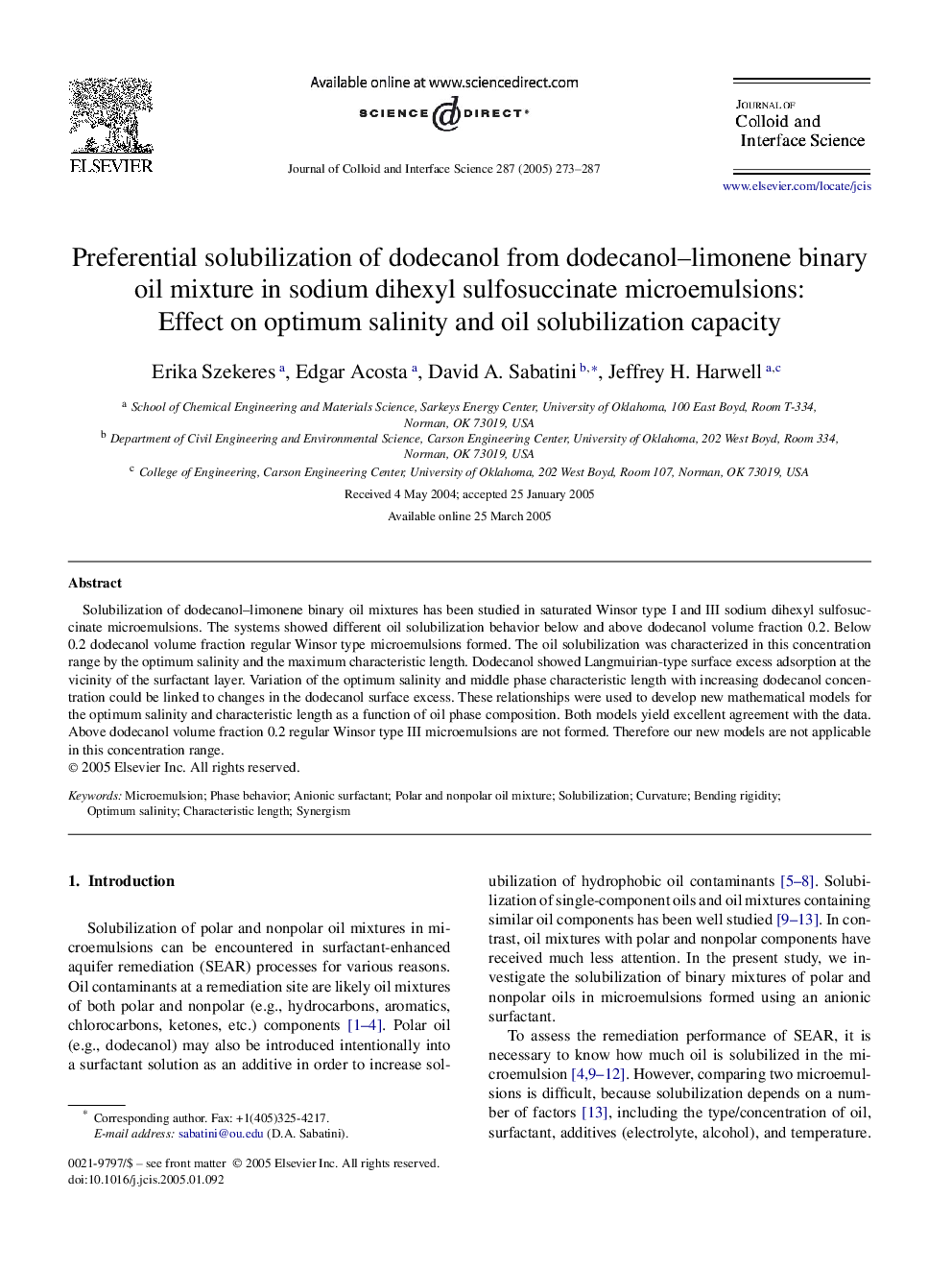| Article ID | Journal | Published Year | Pages | File Type |
|---|---|---|---|---|
| 10378046 | Journal of Colloid and Interface Science | 2005 | 15 Pages |
Abstract
Solubilization of dodecanol-limonene binary oil mixtures has been studied in saturated Winsor type I and III sodium dihexyl sulfosuccinate microemulsions. The systems showed different oil solubilization behavior below and above dodecanol volume fraction 0.2. Below 0.2 dodecanol volume fraction regular Winsor type microemulsions formed. The oil solubilization was characterized in this concentration range by the optimum salinity and the maximum characteristic length. Dodecanol showed Langmuirian-type surface excess adsorption at the vicinity of the surfactant layer. Variation of the optimum salinity and middle phase characteristic length with increasing dodecanol concentration could be linked to changes in the dodecanol surface excess. These relationships were used to develop new mathematical models for the optimum salinity and characteristic length as a function of oil phase composition. Both models yield excellent agreement with the data. Above dodecanol volume fraction 0.2 regular Winsor type III microemulsions are not formed. Therefore our new models are not applicable in this concentration range.
Keywords
Related Topics
Physical Sciences and Engineering
Chemical Engineering
Colloid and Surface Chemistry
Authors
Erika Szekeres, Edgar Acosta, David A. Sabatini, Jeffrey H. Harwell,
